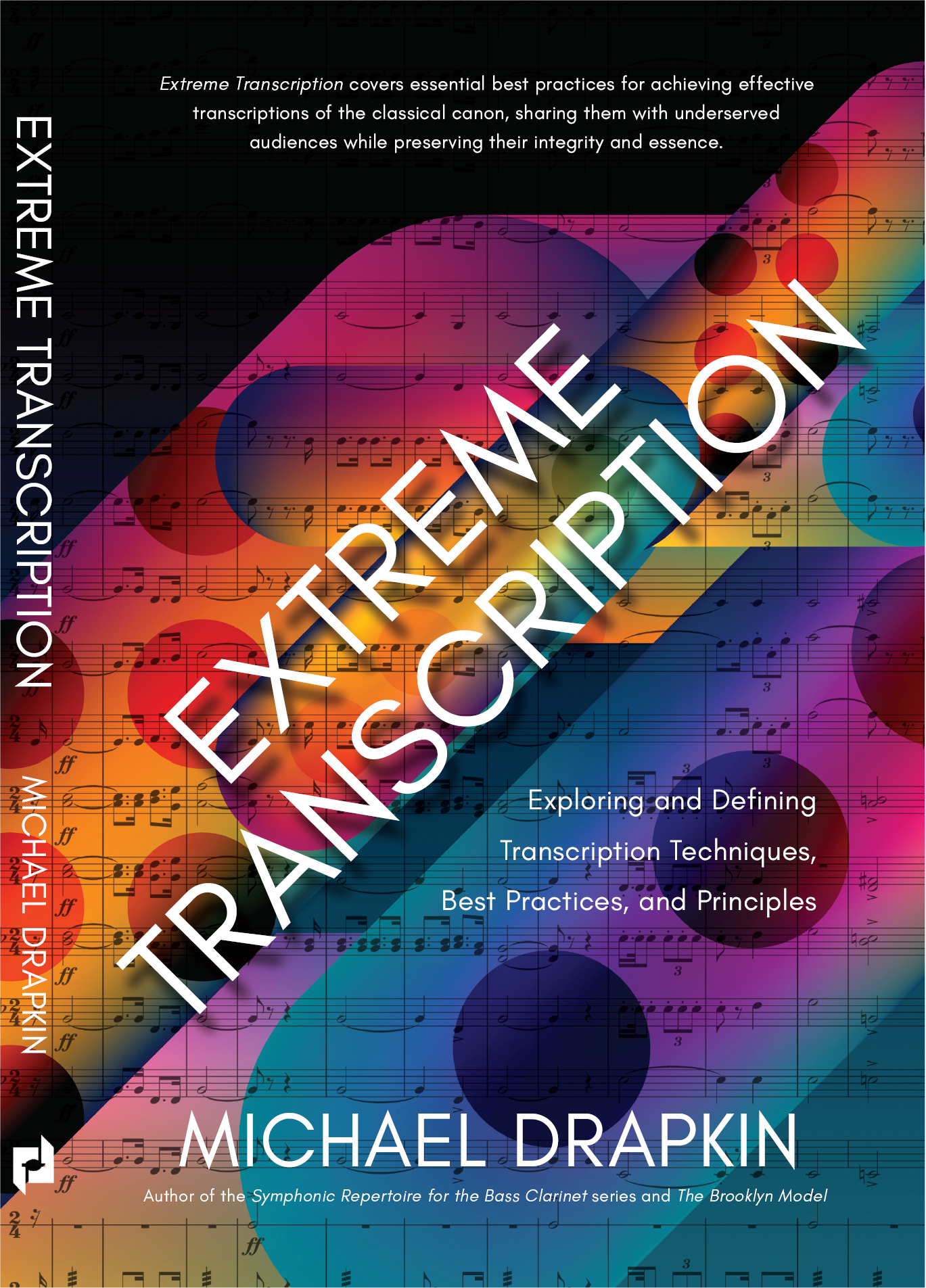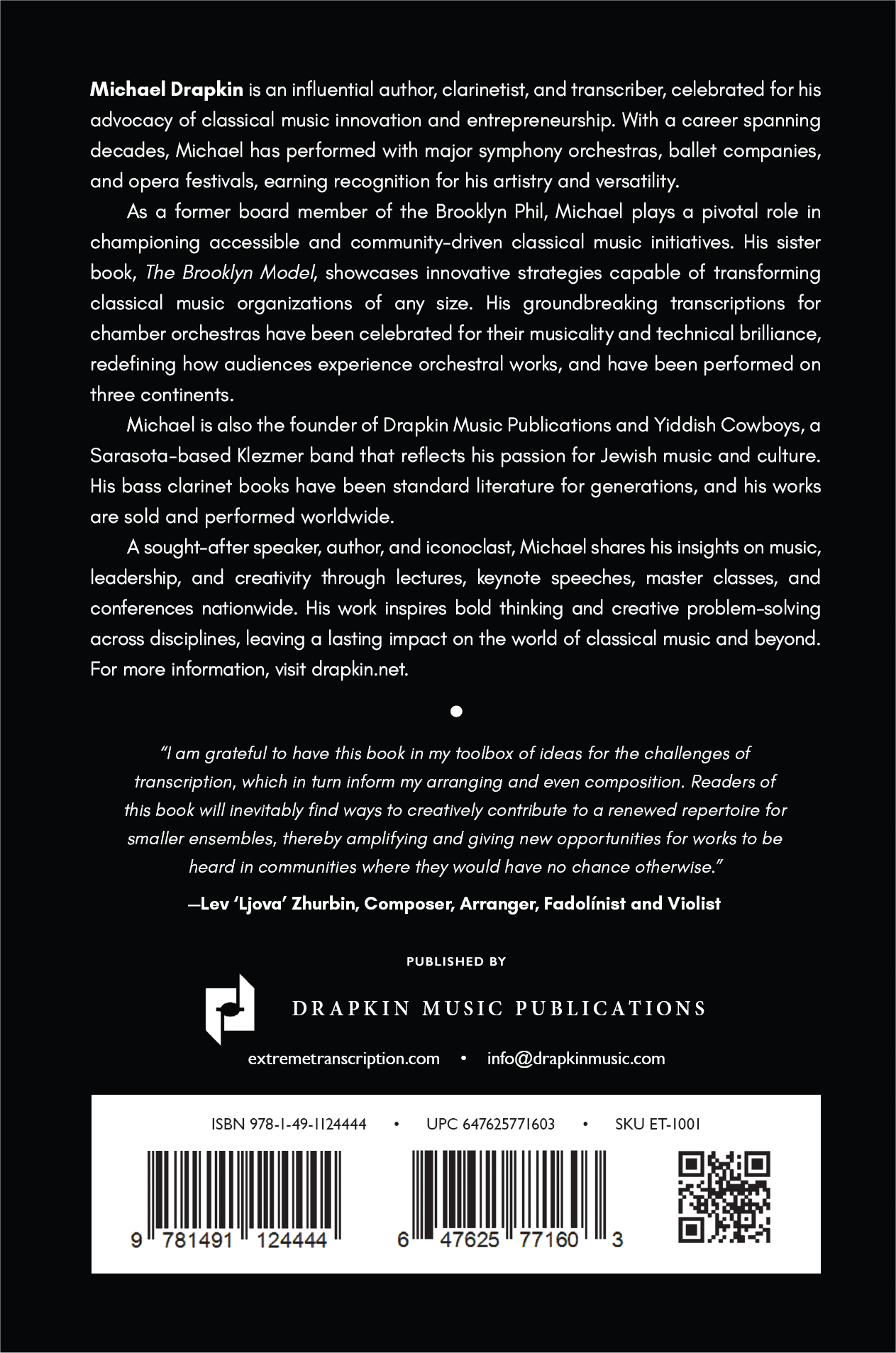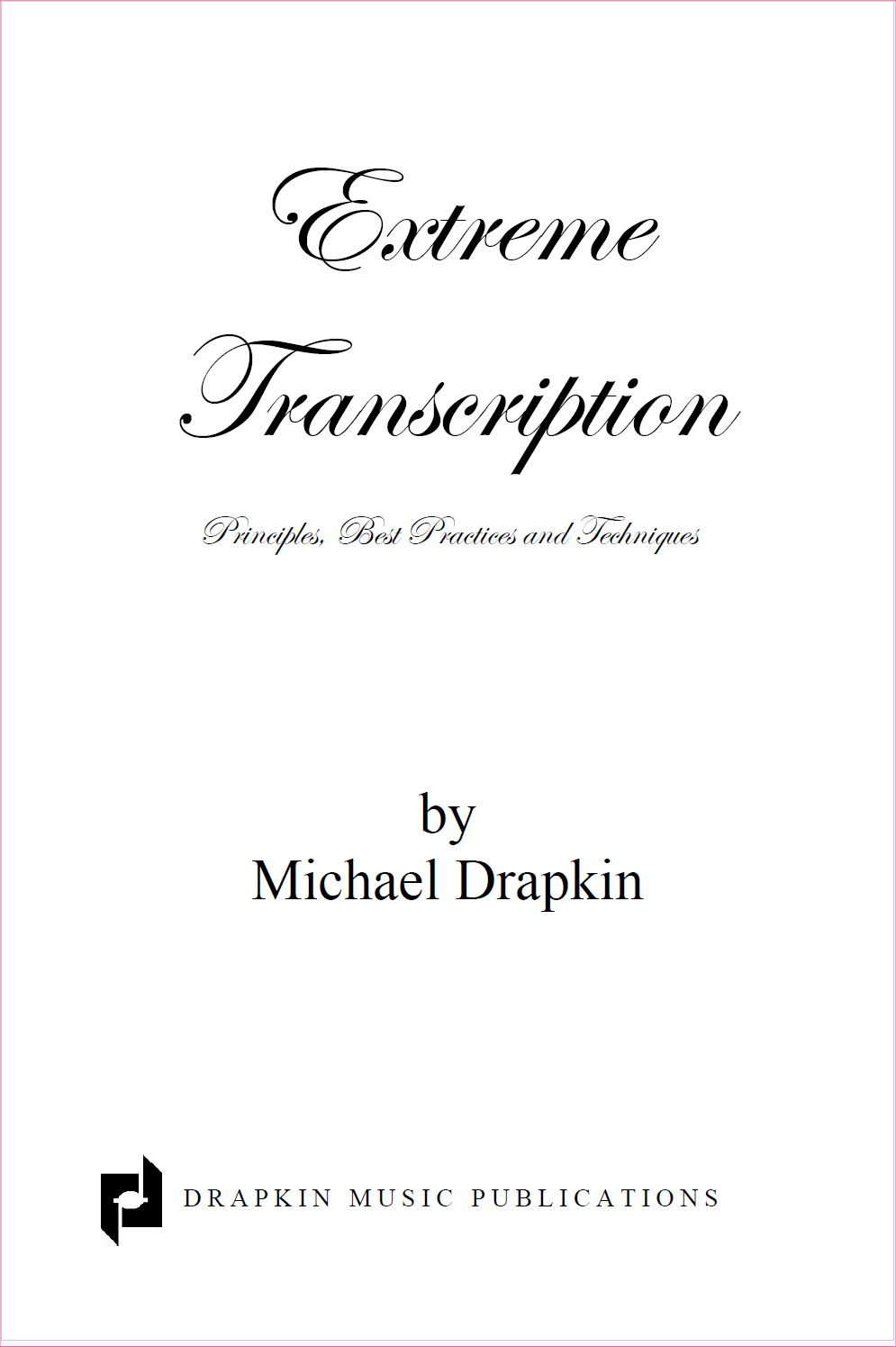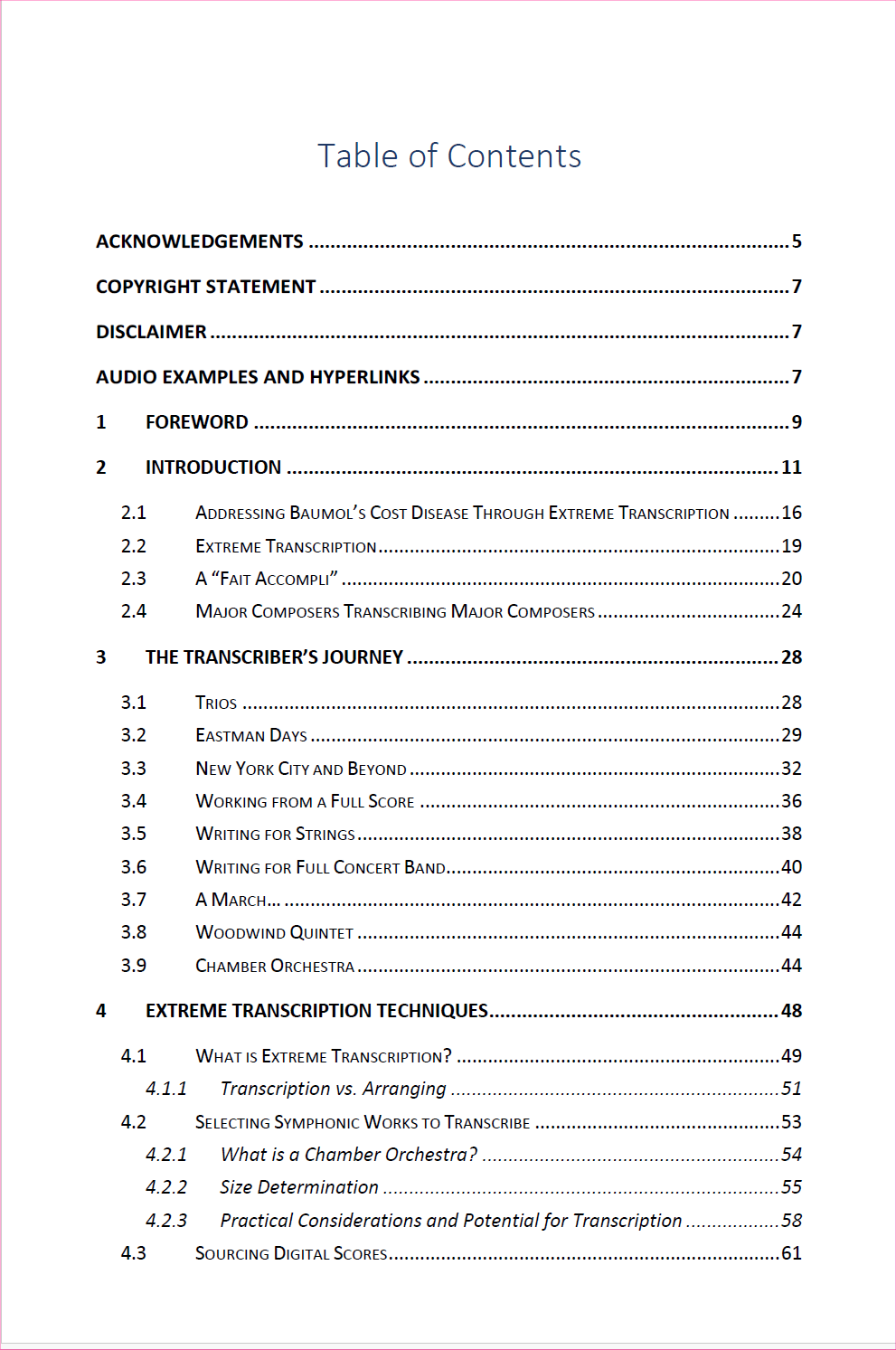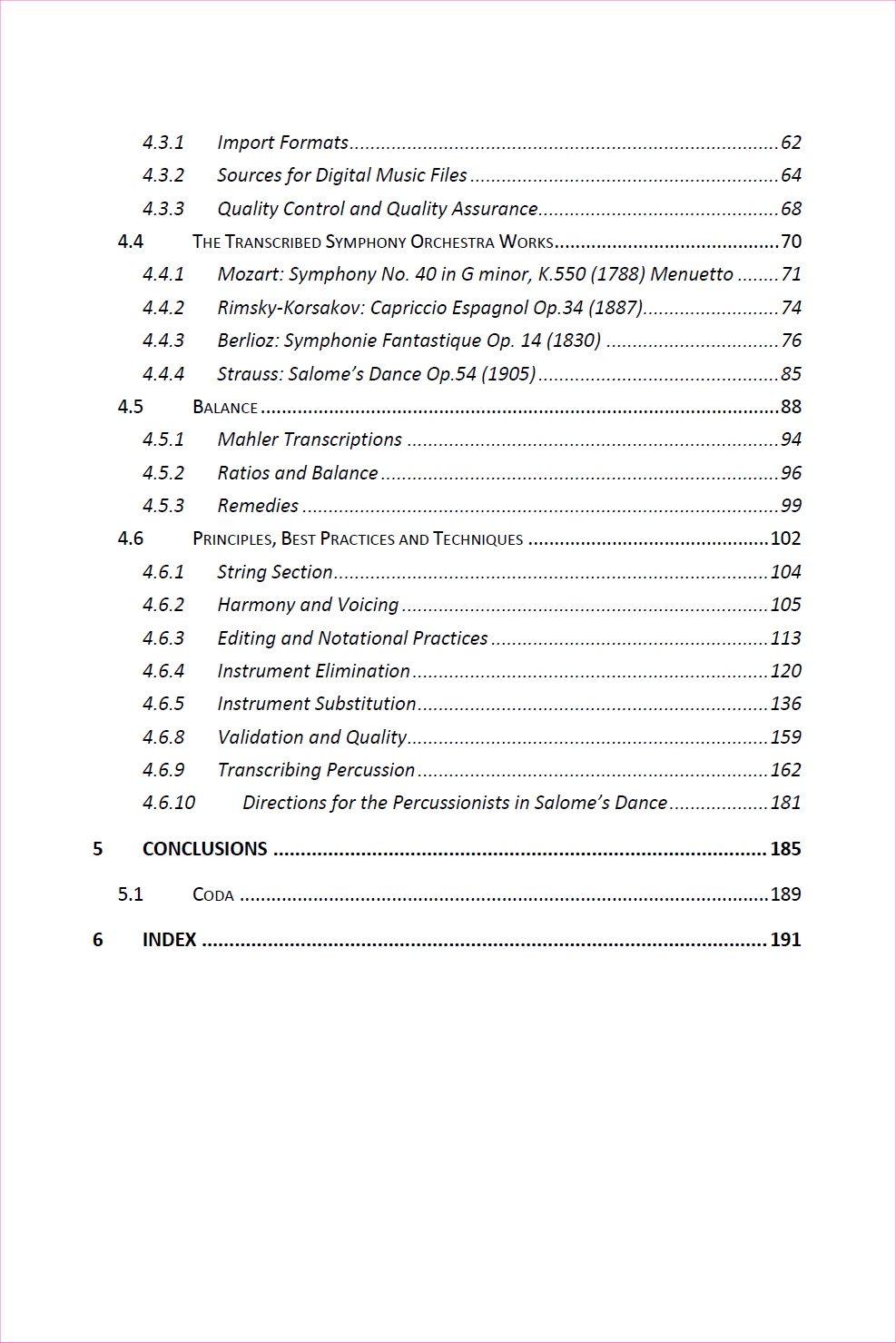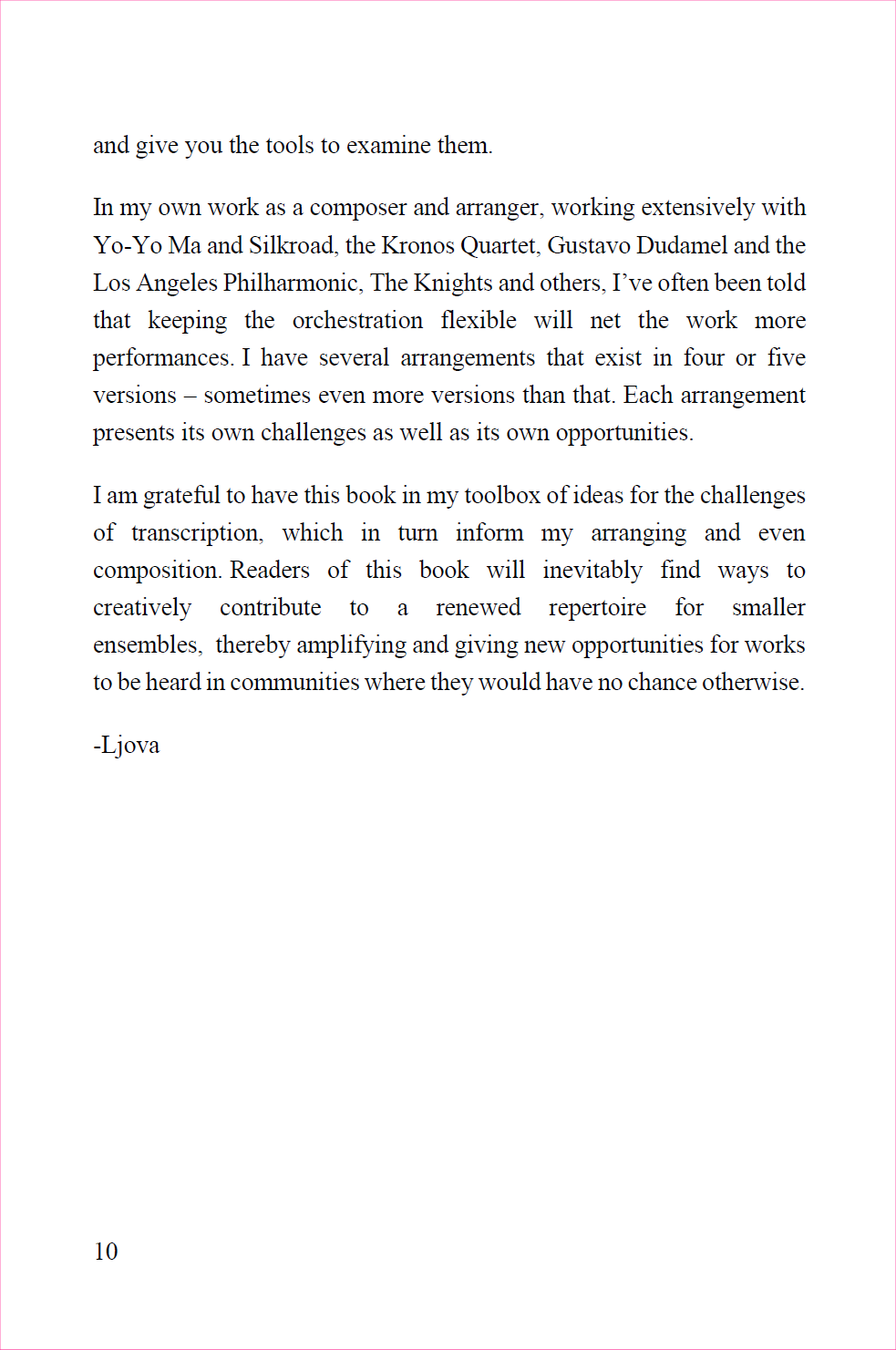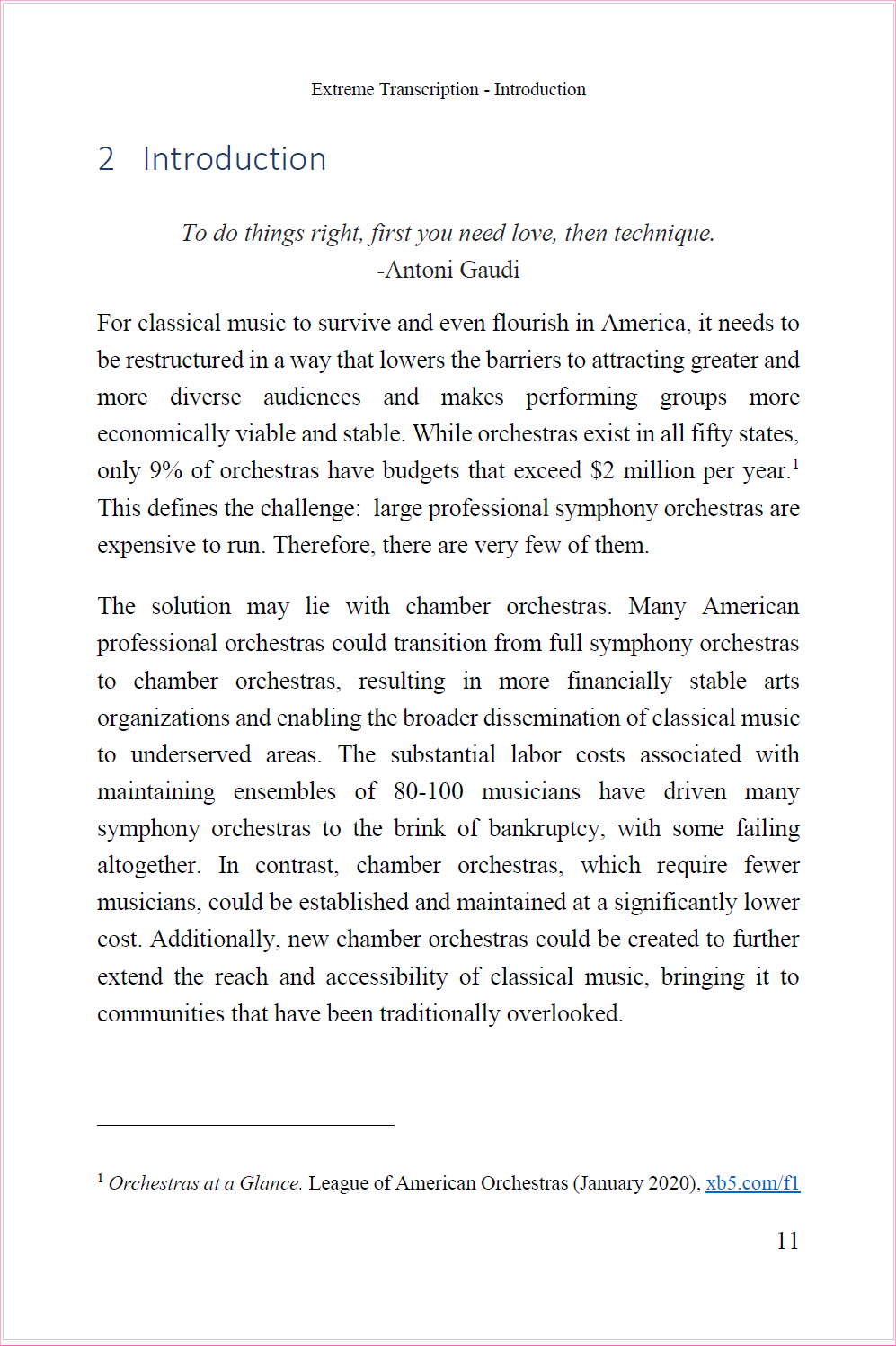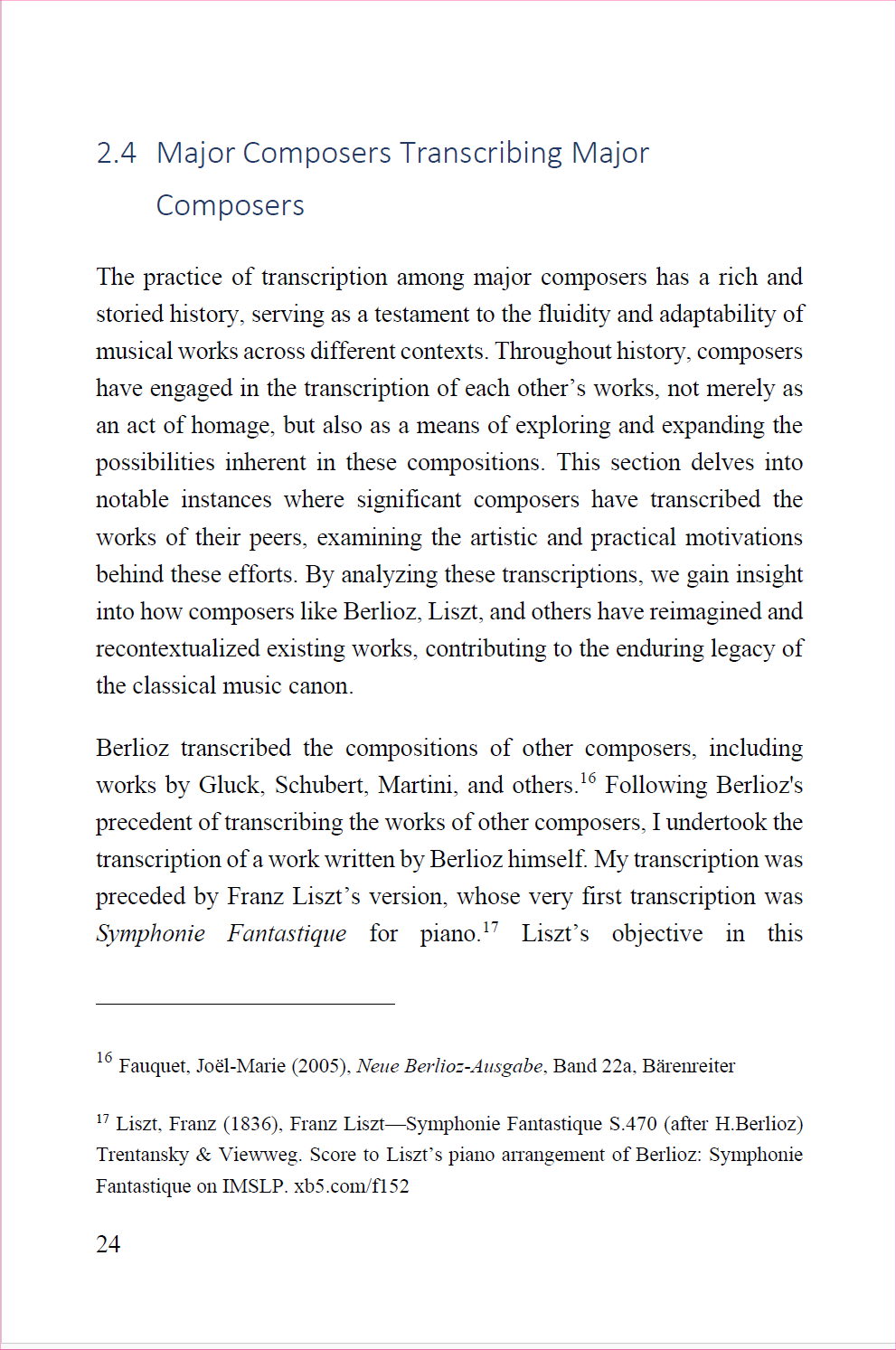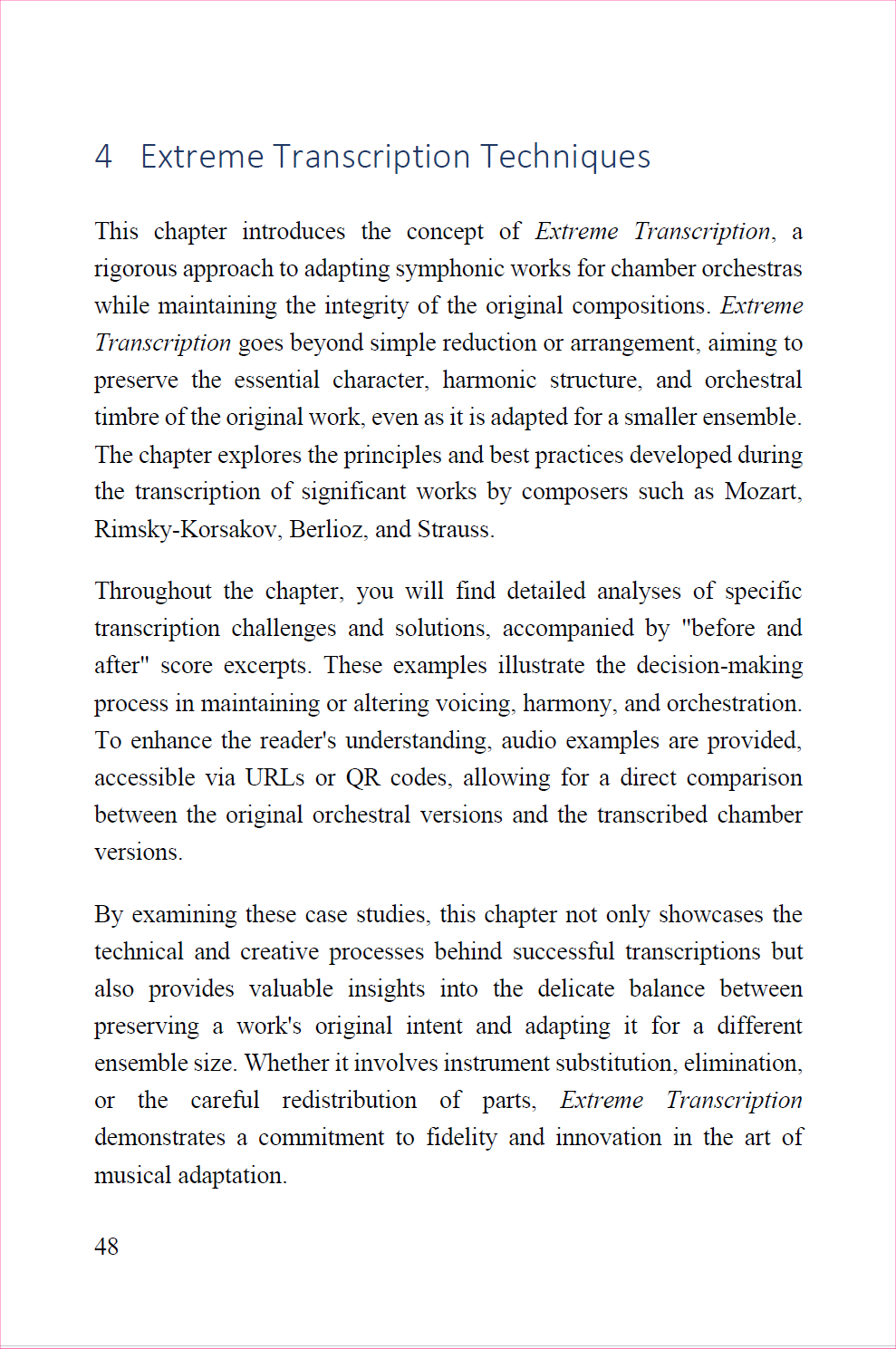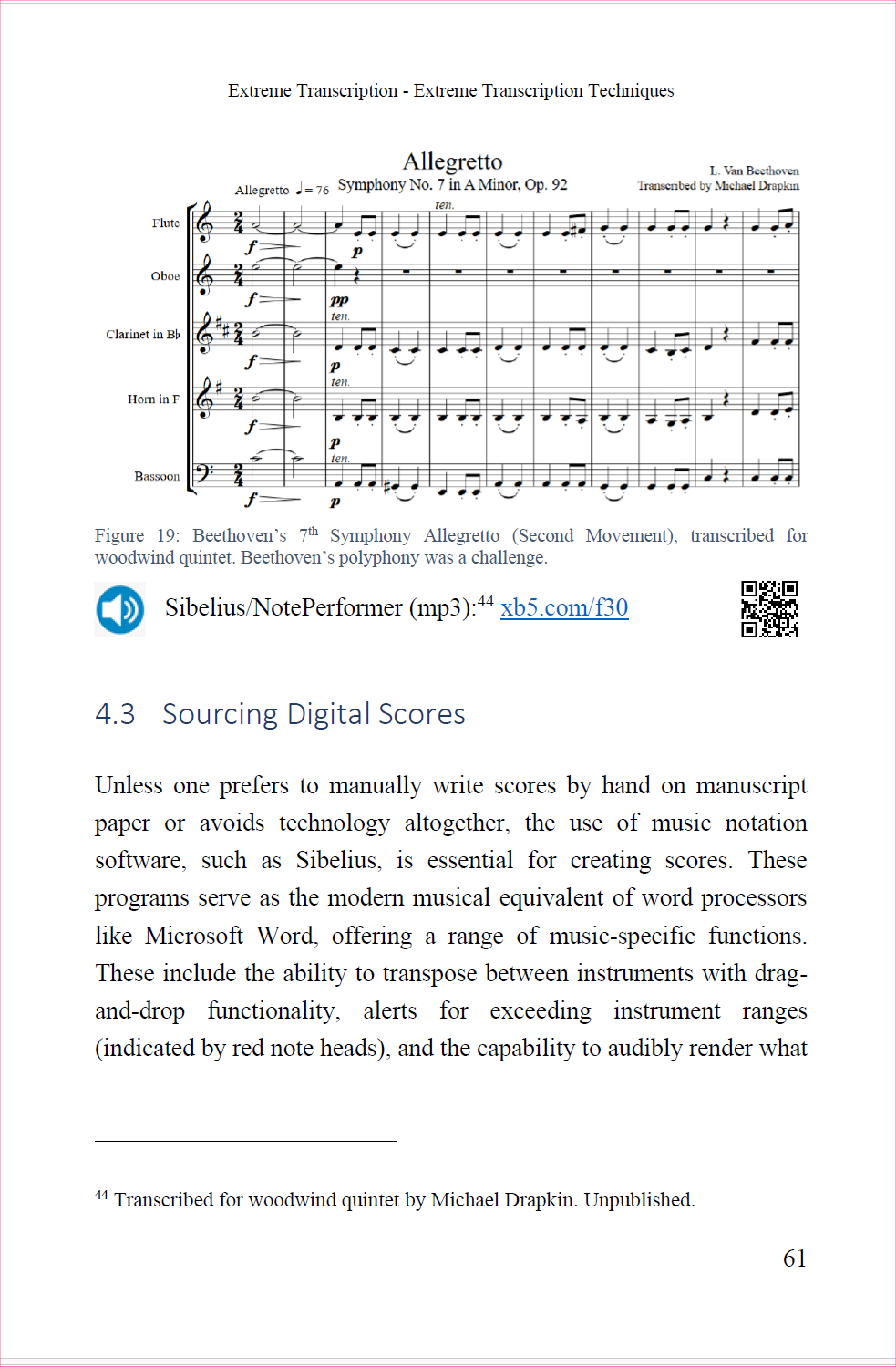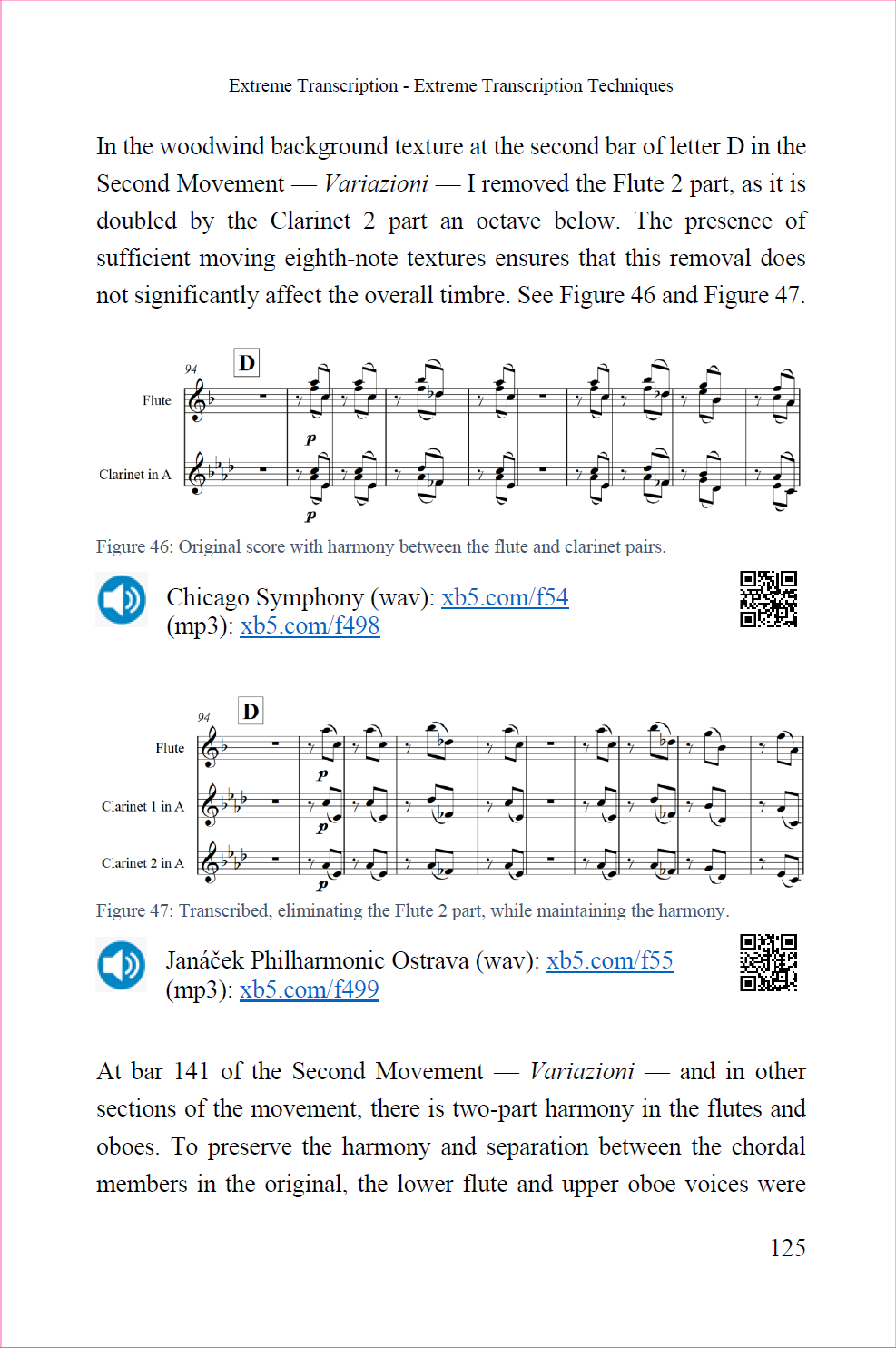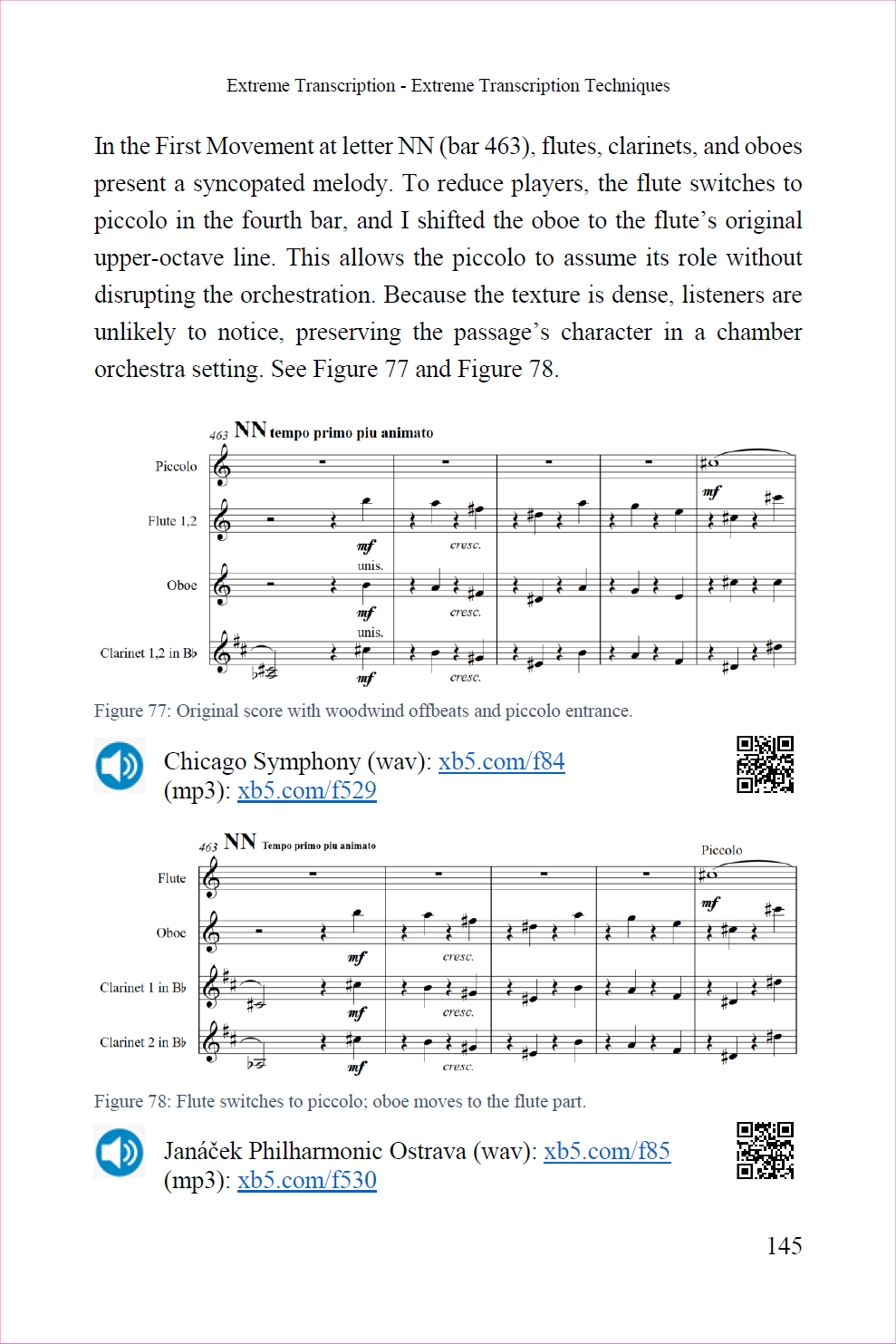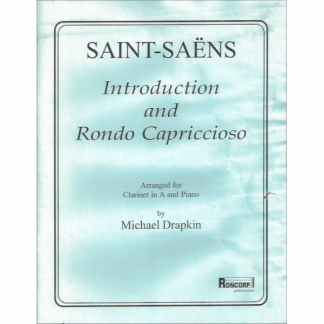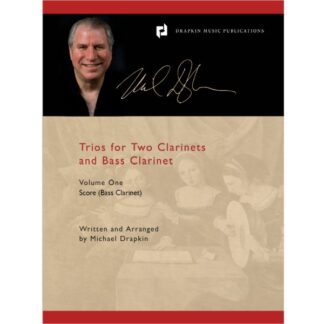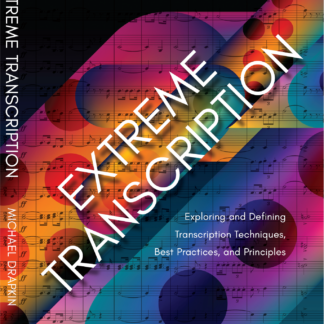Description
Extreme Transcription
Extreme Transcription: Principles, Best Practices and Techniques by Michael Drapkin is a comprehensive guide to the art and craft of adapting large symphonic works for smaller orchestras. Drawing on his decades-long career as a clarinetist, arranger, and composer, Drapkin shows how “extreme” reductions—sometimes cutting an ensemble of over a hundred players down to just a few dozen—can preserve the timeless canon of classical music, help bring these masterworks to unserved and underserved areas, and make them more financially and logistically feasible for chamber orchestras everywhere.
Key Features and Highlights:
- Why “Extreme Transcription”?
Drapkin explains that shrinking a full orchestra to chamber orchestra size (or even smaller) demands innovative strategies that go beyond typical “arranging.” By borrowing a concept from software development—Extreme Programming—he shows that meticulous, iterative refinement can result in faithful yet resource-efficient performances of major works. - Real-World Examples
Drapkin anchors his methodology in four major transcriptions of orchestral repertoire by Mozart, Rimsky-Korsakov, Berlioz, and Richard Strauss—pieces that span the late 18th to early 20th centuries. He presents “before and after” score excerpts, discusses instrument assignments, and details how he balances forces to maintain the character and power of the original. Wherever possible, he pairs these examples with recorded audio comparisons. - Historical and Economic Perspective
From the days of Bach and Liszt to modern orchestras struggling with high operational costs, Extreme Transcription addresses a pressing need: how to keep beloved symphonic works within reach for regional and chamber ensembles. Drapkin’s solutions aim at both practical sustainability and artistic integrity—allowing smaller groups to perform iconic repertoire in intimate settings without losing the music’s essential grandeur. - For Whom Is This Book?
Detailed Techniques and Case Studies
The book devotes considerable attention to the “how” of transcription. Drapkin outlines best practices for:
Instrument Elimination and Substitution – Identifying which voices are indispensable and how to reassign important lines when you have fewer players.
Harmony and Voicing – Retaining a work’s essential harmonic fabric even when certain instrument parts must be reduced or merged.
Percussion Solutions – Condensing multiple percussion parts into just one or two players while preserving the impact and color of the original.
Editing and Notational Practices – Ensuring that the final score and parts are clear, consistent, and easily usable in live rehearsal and performance.
Conductors, Arrangers, and Composers looking to expand their orchestral repertoire in a way that stays faithful to the original.
Music Students and Educators who want a deeper understanding of orchestration and reduction techniques.
Professionals and Enthusiasts who are curious about how an “impossible” reduction of a massive score can still deliver the same emotional impact.
By combining historical context, step-by-step methodology, and detailed case studies, Extreme Transcription shows how masterworks of the classical canon can thrive in smaller ensembles—and reach new audiences—while staying true to their original grandeur. Whether you are a conductor seeking cost-effective repertoire, an arranger eager to learn new reduction skills, or a music lover fascinated by the evolution of classical performance, Drapkin’s book opens a transformative path for keeping these timeless works alive and vibrant in every community.
